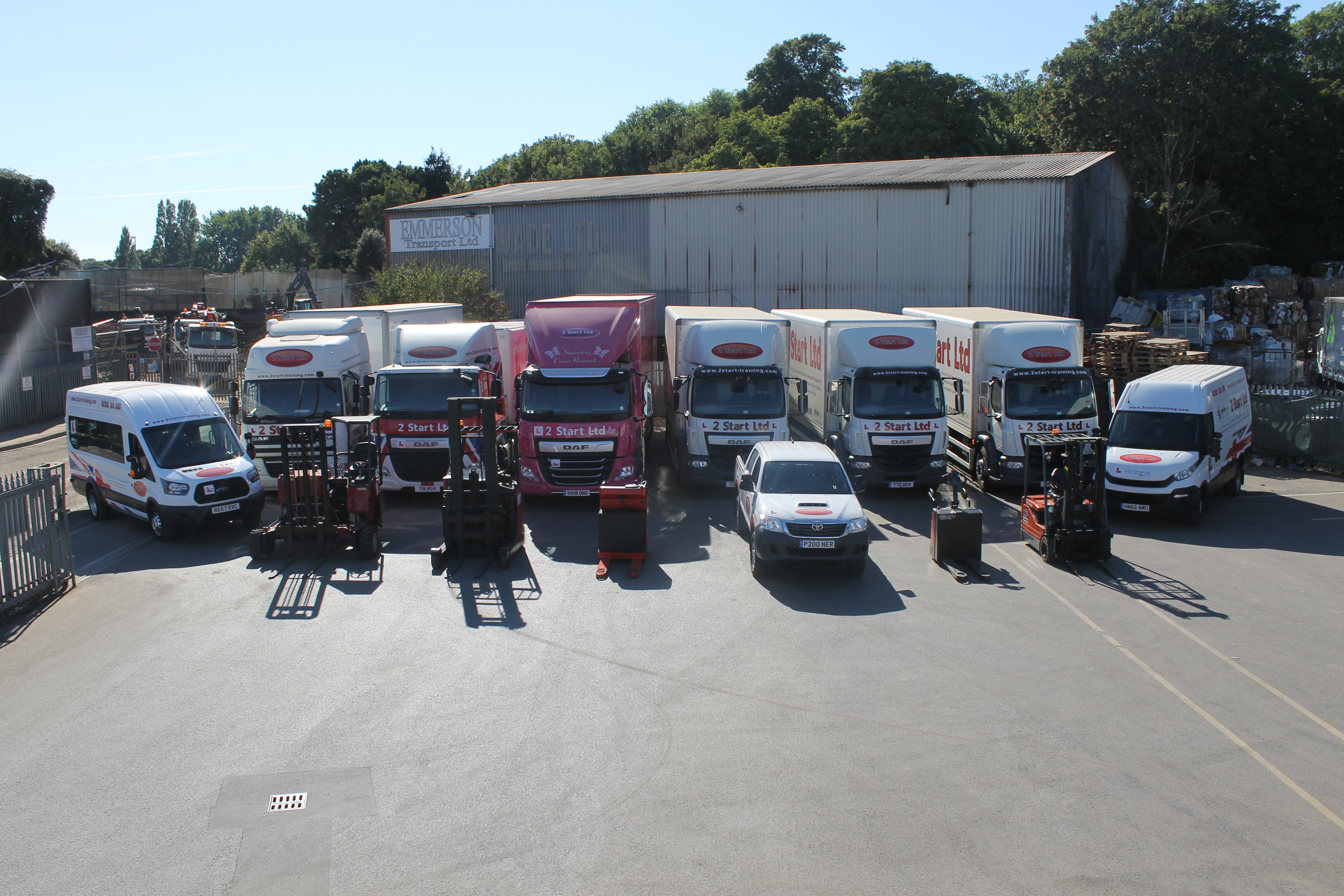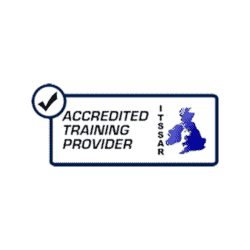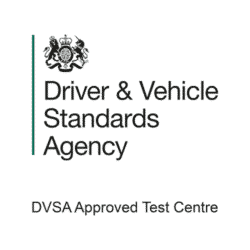Driver Training
What is a Class 1 licence?
A Class 1 licence refers to having the Category C+E entitlement . This means you can operate articulated lorries (HGVs over 3.5 tonnes with a trailer over 750kg).
They asked for a “Class 1” driver. Does this mean Category C1 or C+E?
It can depend, typically when someone talks about “Class 1” they’re referring to a Category C+E Class 1, articulated lorry licence. Licence categories changed in the early 1990s to bring the U.K. into line with the rest of Europe. Some of the main categories include:
- Category D1 & D1+E
- Category C1 & C1+E
- Category C / Rigid
- Category C+E / Articulated
We have training courses covering all of these categories. Click the link below to view our full range of courses.
What is LGV Level 2?
LGV level 2 is also referred to as LGV2 or Class 2 historically, but officially known as Category C as this is what will be shown on the drivers licence once they have passed their test, but students should first practice, build their confidence & knowledge with a reputable LGV training company such as 2 Start Ltd in preparation for their final test with a DVSA examiner.
What is a LGV 2 driver?
An LGV 2 driver is someone that drives a rigid Large Goods Vehicle (LGV) that can carry weights of more than 3.5-tonne, but the Class 2 Category C licence held by an LGV 2 driver enables them to carry weights typically over 7.5-tonne or more.
Although no maximum weight limit is set, when you pass your Class 2 (LGV2) Category C licence, most rigid lorries will only transport up to 18-tonnes.
What licence do I need to drive an HGV?
There are two HGV licences that you will need to obtain depending on the category of vehicle you want to drive. To drive a Rigid lorry, you will need to gain your CAT C licence, and to drive an articulated lorry you will need to obtain your C+E licence.
Those who hold a CAT C licence can drive vehicles over 3,500kgs with a trailer up to 750kgs MAM.
Those who hold a C+E licence will be able to drive vehicles over 3,500kgs with a trailer over 750kgs.
What is the difference between LGV and HGV?
To put it simply, there isn’t one anymore.
What do HGV and LGV mean?
The term HGV or Heavy Goods Vehicles was introduced when the UK government introduced road tax. The Government needed a way to categorise vehicles by numerous things such as engine size, weight and emissions. The term LGV or Light Commercial Goods Vehicle described vehicles that had a gross weight of under 3500kg. The term HGV described anything with over 3500kg gross vehicle weight. This type of classification made it easier for people to tell the difference between LGV and HGVs based on their size.
When were the changes to the categories made?
In 1992, the UK unified with the EU to reflect their licence categories. The EU had classified vehicles over 3.5 tonnes as commercial trucks. This meant that in the UK, LGV had to change from a ‘Light Goods Vehicle’ to a ‘Large Goods Vehicle’. There was now, no difference between HGV and LGV.
Since 1992, HGV or Heavy Goods Vehicle has had the same meaning as LGV or Large Goods Vehicle.
The licence categories changed in the UK at the same time. What was HGV Class 1 is now known as Category C+E. HGV Class 2 training is currently known as Category C.
So what licence do I need?
Many people in the industry may well refer to the old or new classifications or a mixture of both. As training providers, we understand that this can be confusing for those people who are new to the industry. To make it simpler to understand, we have shown you in pictures what licence you require to drive which vehicle. We have also included other terms you may come across to describe the licence type.
How can 2 Start Training help me?
As the South Coast premier driving logistics training provider, we pride ourselves in helping you to achieve your training goals, whether that be re-entering the workforce, a change or advancement in your career or a complete beginner. We have the largest variety of courses suitable for every level of ability.
If you are still unsure about the difference or need some advice on which course is the right one for you, get in touch with our expert team today and we will be able to help you.
Is it hard to drive an HGV?
This really depends on your level of driving confidence and spatial awareness; it can take some getting used to when you first begin to drive an HGV. However, the more experience you gain and confidence you get, the ‘easier’ HGV driving will become.
Completing any of our HGV training courses will give you the skills and knowledge that you need to safely and efficiently operate the category of vehicle specified in your training and become a better HGV driver.
The size and weight of a rigid and especially an articulated vehicle is difficult to get used to but receiving industry-leading training, such as the standard of service provided by us at 2 Start, will ensure you gain your HGV licence.
Is it hard to become an HGV driver?
Completing one of our HGV driver training courses will give you the resources needed to pass your HGV driving test.
We have an extensive catalogue of courses for you to choose from depending on your individual requirements, meaning we will have the ideal package for you! Additionally, we are also allowing students to build their own courses using our Build your own packages.
HGV driving is an extremely skilled job, requiring a multitude of different skills and expertise apart from your driving ability, including good time management skills.
How to start HGV training?
To start one of our LGV driver training courses, all you need to do is decide which of our courses is the best one for you and then choose the best date available for you to complete your training. It is that simple! Our online booking system allows you to easily book your LGV training course and complete your training quickly!
Additionally, you can call our team on 02392 123 555, and they will arrange everything for you! Also, you can email us at office@2start-training.com.
How much does it cost to become a lorry driver in the UK?
HGV training costs vary across the board, with different companies offering different prices.
The price for your HGV training will also depend on; which category vehicle you wish to train on, the number of hours of training you want to complete, and other external factors such as some candidates needing to complete re-tests.
Here at 2 Start, we have very competitive HGV training prices for all of our categories, including C1, C1+E, CAT C, C+E, and our new Fast Track car to C+E courses.
How much does an HGV driver earn?
An HGV driver in the UK as of February 2023 typically earns an average salary of around £38,136*[i]. H owever, this number can drastically change depending on many factors, such as:
- If you are driving a Class 1 or Class 2 HGV.
- The experience you have as an HGV driver.
- The type of loads that you are delivering.
- The distances and hours that you are willing to work.
- If you have additional entitlements such as ADR.
These are just some of the varying factors that can affect how much you earn as an HGV driver, with many more that can be named. However, with increasing demand and an increase in salaries for HGV drivers, some companies have been seen to offer up to £60,000*[ii] a year for HGV Class 1 drivers.
[i] https://uk.indeed.com/career/truck-driver/salaries
[ii] https://uk.indeed.com/jobs?q=hgv+driver+%C2%A360%2C000&l=England*All figures accurate at the time of publishing
HGV Driver Training Cost?
The cost to complete your HGV driver training will range from £264 for our C1 7.5-tonne session-only course through to our Gold Fast Track Car to C+E course would cost £4,590 and comes with a few added benefits to provide our students with peace of mind like the pass protection for example.
The HGV driver training course you require will depend on the category of HGV vehicle you would like to drive and your current level of HGV driving experience.
The cost of the training will be respective to the required number of theory and practical-based training hours you will need to receive. This again comes back to your current level of experience and the vehicle
classification you wish to drive; we can also offer an evaluation session with one of our instructors who will then be able to advise of the recommended number of training hours you will likely require to be test ready.Can you go straight from a car to a Class 1 HGV?
Yes, as of November 15th 2021, you can now go straight from a car to a Class 1 HGV. The November 2021 changes were introduced by the Government to reduce the national HGV driver shortage.
These changes included:
- Approved training centres and accredited assessors are now able to undertake the reversing test for the 3A section of the test.
- The 3B practical driver section of the test still needs to be completed with a DVSA examiner but is now 60 minutes in duration, up 10 minutes from the previous 50 minutes it used to take.
We have added many Fast Track options to allow our students to go from a car straight to a Class 1 HGV.
If you passed your car driving test before 1st January 1997, you automatically have “acquired rights” to categories C1, D1, and B+E entitlements. This means you can drive goods vehicles up to 7.5 tonnes, towing a trailer up to 750kg, a minibus up to 16 seats towing a trailer, and a car towing any trailer.
If you passed your test after 1st January 1997, you are allowed to drive vehicles up to 3.5 tonnes (Ford Transit or Mercedes Sprinter sized vehicles but check the Gross Weight on the plate of the vehicle because some “Small vans” are not that small!) towing a trailer up to 750kg (but not exceeding a train weight of 3.5tonnes), a minibus up to 8 seats towing a trailer up to 750kg (not exceeding a train weight of 3.5tonnes) and a car towing a trailer up to 750kgs (again, not exceeding the 3.5 tonnes train weight).
If you do not have “acquired rights” you will need to complete some form of HGV training, depending on the category of vehicle you are planning on driving, such as Category C or Category C+E.
Although, you can still complete your Category C course before taking your Category C+E training. This will allow you to gain confidence and experience in driving a CAT C vehicle before making the jump to a C+E.
Are truck drivers in demand?
Yes, truck drivers are in demand now more than ever! The national UK HGV driver shortage has meant that many companies are looking for drivers and are offering improved salaries and more sociable working hours.
Read our recent article on is it worth getting my UK HGV licence? For more information on the top reasons, you should gain your HGV licence and the huge demand we are seeing for HGV drivers.
How long does it take to become an HGV driver?
The time it takes to become an HGV driver from start to finish can vary for every candidate, depending on their requirements and skill levels they have when they first start their training.
A Good estimate from start to finish is around 4-5 months to complete the whole process, including roughly 2-6 weeks from completing your medical and then receiving your provisional licence with extra HGV entitlements added.
The amount of time it takes you to pass your HGV test could be longer, with some candidates needing extra hours of on-the-road driving anf more time to gain confidence in operating an HGV.
Can I get funding to become an HGV driver?
Yes, funding options are available for some candidated if they meet the specified requirements. There are approved schemes like the Governments Skills Bootcamps available that will give you funding to complete your HGV driver training, or some companies will also pay for candidates to complete training when hiring new drivers.
We also offer deposit options for all of our training courses, allowing you to pay for the remainder of your course before you come to one of our depots to complete your training.
Forklift
Do you need a licence to drive a Forklift Truck?
You do not need a DVSA approved Provisional or full driving licence to operate a Forklift Truck. You only need to gain the forklift certification for the Forklift Truck type you will be operating.
How much is a Forklift Certification?
Rather than the individual paying for the certification, you are paying for the course you must complete.
Say for instance, you must complete Counterbalance Forklift training. This will cost £660 for a Novice course, £228 for refresher, and £480 for an experienced operator course (as of May 2024).
The certification itself is issued after you have completed your course successfully.
How can I get my Forklift Licence?
If you are looking to gain your Forklift licence, there are certain factors you must consider.
The first is the type of Forklift truck you want to be trained to operate. You must also consider which training provider fits your needs and requirements.
Choosing an accredited training provider will also help authenticate your training and certification once gained. Finally, you need to choose the correct training type for you. For example, if you have never held a certification for the Forklift truck type, you must complete a novice course. If you need to renew your certification, then a refresher course is most suited for you.
What is a forklift operator?
A forklift operator is someone qualified to drive a forklift, sometimes referred to as a fork truck, with the most common environment using forklifts, being warehouses and yards. The type of forklift you will use will depend upon the type of work, space, load, and environment you are operating in, and each forklift has unique advantages for all of these factors.
Forklift operators play a huge role in ensuring that business operations are completed effectively and efficiently.
ADR
What does ADR stand for?
ADR stands for Accord Dangereux Routier, which is French for “European Agreement concerning the International Carriage of Dangerous Goods by Road.”
PASMA
Is PASMA a legal requirement?
PASMA is not a legal requirement. Although many employers will provide training for the towers their staff will be working on, as PASMA courses cover the legislations and the working at heights regulations, as well as understanding the practical elements of assembling, moving, working on and dismantling PASMA equipment.
Do I need a PASMA certificate?
A PASMA certificate is not a legal requirement.
However, anyone who is going to be using PASMA equipment should have had the correct and adequate training. The individual must also understand the working at heights regulations.
Driver CPC
Who needs Driver CPC?
You need a Driver CPC if you’re looking to drive buses, coaches or HGVs for a living. If the vehicle is over 3.5 tonnes or with 9 or more passenger seats and it will be the main part of your job then it’s essential.
There are certain drivers who are not required to hold a Driver CPC, they are outlined below:
Drivers are exempt if the vehicle is:
- Used for non-commercial carriage of passengers or goods, for personal use;
- Undergoing road tests for technical development, repair or maintenance purposes, or of new or rebuilt vehicles which have not yet been put into service; (must be driven by a qualified motor mechanic)
- Used in the course of driving lessons for the purpose of enabling that person to obtain a driving licence or a Drivers CPC; (must be driven by driving instructors)
- Carrying material or equipment to be used by that person in the course of his or her work, provided that driving that vehicle does not constitute the driver’s principal activity. (For example, transporting scaffolding to the driver’s place of work. Driving must not become the major part of the work, i.e. the work being carried out at the site of work must be a significantly greater use of time than driving itself.)
- With a maximum authorised speed not exceeding 45 km/h; (such as agricultural tractors)
- Used by, or under the control of, the armed forces, civil defence, the fire service and forces responsible for maintaining public order.
- Used in states of emergency or assigned to rescue missions.
Operators (i.e., haulage and transport businesses) of HGV and PCV vehicles must also be CPC certified, however, the training for this is slightly different due to them being an operator rather than a driver.
What is Driver CPC?
The Driver Certificate of Professional Competence (Driver CPC) is a legal requirement for those driving larger vehicles professionally.
Having been introduced in Europe, legislation came into effect in the UK on the 10th September 2009. Its purpose is to improve road safety and uphold high standards of driving.
How do I check my Driver CPC hours?
Checking your Driver CPC hours is easy to do, just follow our simple steps below to verify your DCPC hours using the official Governments DCPC hours checking tool online.
NOTE: you must be registered to use this service, you can only register once your CPC training provider (like 2 Start) has recorded your first Driver CPC hours with the DVSA.
- To register visit: https://driver-services.dvsa.gov.uk/cpcode/flow/user?execution=e3s1
- Once registered, navigate to: https://driver-services.dvsa.gov.uk/cpcode/flow/user?execution=e2s1
- Read the contents and once happy, click “Start Now”
For more information about checking your Driver Certificate of Professional Competence (CPC), please visit the Governments page dedicated to this subject.
Do I need Driver’s CPC training?
You will only need to complete your 35-hours of periodic CPC training if you are driving for hire & reward purposes or as the main part of your job. If you are driving as a hobby, then you will not need to complete
CPC training.Any driver who first passed any category C driving test after 9th of September 2009 must have this new qualification. Drivers who held any LGV driving entitlement before that date have 5 years “acquired rights” to the
Driver CPC.The Driver CPC is enforced on the road in the same way as holding an appropriate driving licence and it is an offence to drive without it. There are penalties for drivers and operators who flaunt this new requirement.
We have both online and classroom CPC training courses available with 7-hour and 35-hour options on offer. We also have a wide variety of training modules that you can choose to complete!











